Top Mobile Gaming App Marketing Strategies You Must Know
With over 4.88 billion smartphone users worldwide, the mobile gaming market is ripe with opportunity yet fiercely competitive. Revenues are projected to reach $166.64 billion by 2025, and the gamer base is expected to grow to 1.9 billion by 2027, so mastering the best mobile app marketing strategies is crucial.
In an era where games like "Royal Match," "Monopoly Go," and "PUBG Mobile" achieve monumental success, a strong marketing strategy becomes essential for boosting downloads and building a lasting brand presence.
In this blog, we’ll explore the best mobile app marketing strategies that can help your game not only stand out but also maximize return on ad spend and effectively engage a growing audience.
Here are some of the most effective and tested mobile app marketing strategies that will take your marketing to the next level:
1. Utilizing Paid Advertising for Rapid User Acquisition
Paying advertising stands out as a powerful method for acquiring users effectively. However, it's essential to approach it with a well-thought-out strategy rather than just investing blindly. Here’s how you can make the most of paid advertising:
Different Ad Formats and Their Impact
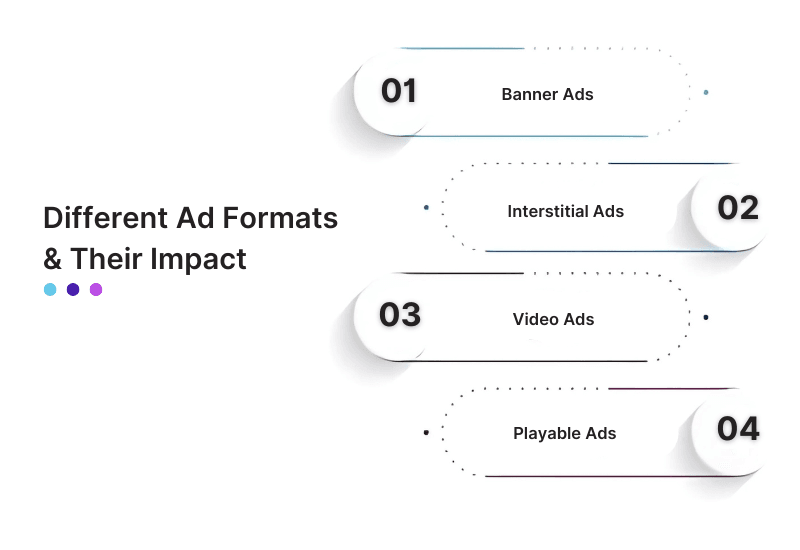
The ad type you use significantly affects how well it connects with your target audience at each stage of the customer journey. Here’s a breakdown of the most common ad formats and when to use them:
Banner Ads: Best suited for building top-of-mind awareness and brand recall, banner ads are ideal for the early stages of the customer journey. They help familiarize users with your game, keeping it visible and memorable.
Interstitial Ads: These provide a high impact and are great for engaging users who are already familiar with your brand but need that extra push to deepen their interaction (mid-funnel).
Video and UGC Ads: Video ads effectively showcase gameplay to drive installs. UGC ads, a cost-effective option, boost engagement by offering authentic and relatable content, helping users connect with the game and increasing acquisition rates.
Playable Ads: Playable ads offer users a mini experience of your game before they download it. They allow potential players to engage directly with your product, significantly boosting interest.
The placement of these ads is just as important as the format itself. For instance, social media feeds, in-app placements, or ads on gaming platforms can target potential users based on their behaviors and interests, such as gaming activity or app usage.
Setting Your Budget and Optimizing Ad Spend
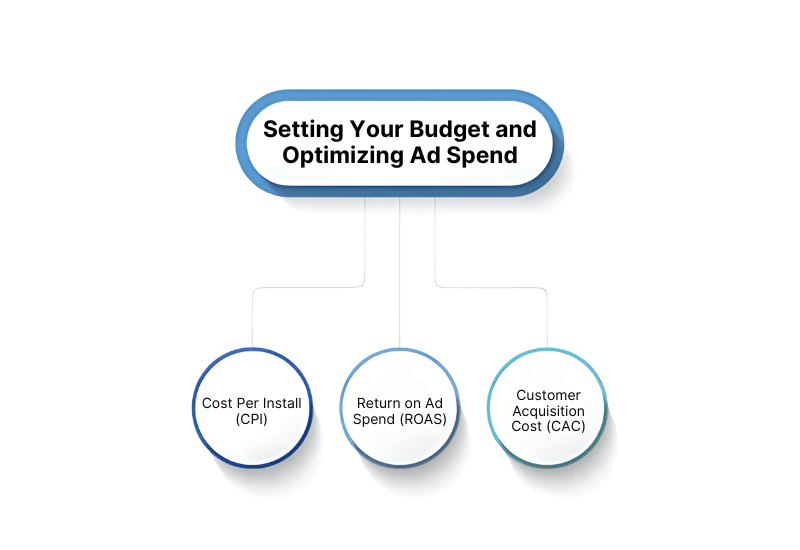
A successful paid advertising campaign requires careful budget allocation and consistent optimization. Start by defining clear goals for your campaign, such as:
Cost Per Install (CPI): How much are you willing to pay for each installation?
Return on Ad Spend (ROAS): The revenue generated for every dollar spent on advertising.
Customer Acquisition Cost (CAC): The total cost of acquiring a new user, including ad spend and other related expenses.
Monitor these metrics regularly and adjust as needed to optimize your ad spending. For example, if you find certain ad placements underperforming, consider shifting the budget to higher-performing channels.
Measuring and Analyzing Ad Performance
A successful ad campaign requires continuous monitoring and adaptation.Platforms like Google Ads, Facebook Ads Manager, Mobile Measurement Partners (MMPs), amongst others, provide detailed insights to track and measure campaign performance. By analyzing this data, you can identify trends, understand what’s working, and optimize underperforming areas.
Fine-tuning your approach through these analytics ensures your campaigns achieve consistent, high performance, driving better results with each iteration. A strong paid advertising strategy, combined with a deep understanding of your audience, ensures your efforts resonate with the right players, maximizing impact and ROI.
Also Read: Implementing Effective Ad Strategies in Mobile Games Without Hurting User Experience
2. Understanding Your Target Audience
Creating effective marketing campaigns for your mobile app starts with understanding who plays your game and why they choose to download it. By gaining deeper insights into your audience's preferences, behaviors, and regional influences, you can craft tailored strategies that drive success. Let’s break it down:
Tier 1 and Tier 2 Markets in Mobile Gaming
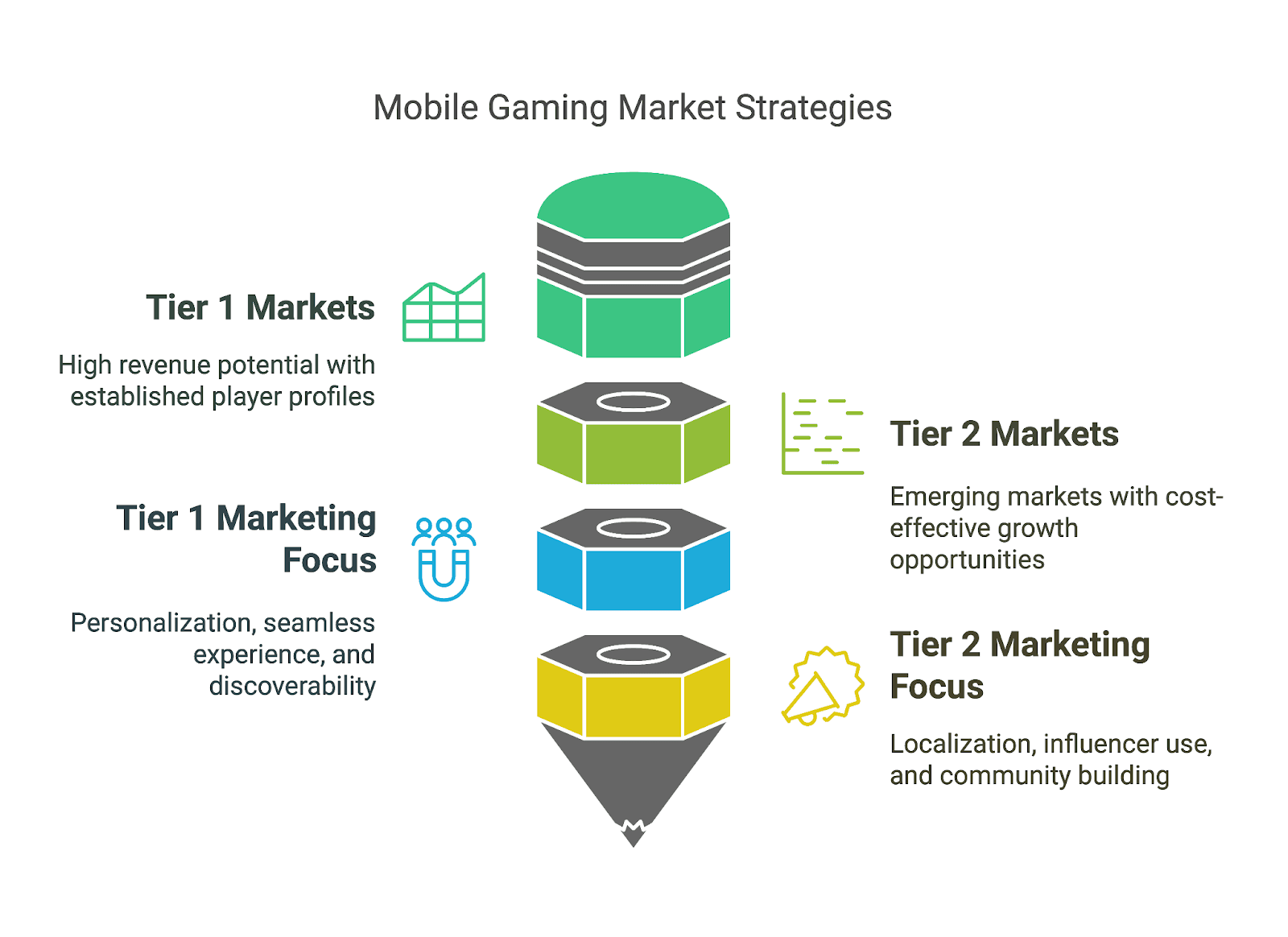
Title: Comparative Analysis of Tier 1 and Tier 2 Mobile Gaming Markets
Aspect | Tier 1 Markets | Tier 2 Markets |
Countries | United States, Canada, United Kingdom, Germany, France, Australia | Russia, Brazil, India, Indonesia, Mexico |
Ad Formats | Rewarded video ads, In-App Purchases (IAPs), banners | Banner ads, rewarded video ads, offerwall ads |
Player Profile | Higher purchasing power; familiarity with established games | Emerging mobile gaming hubs; cost-sensitive users |
Marketing Focus | - Enhance discoverability through engaging ads and optimized app store listings - Incentivize first-time users with exclusive bonuses or discounts | - Localize ads and gameplay to resonate with local cultures - Collaborate with local influencers to build credibility and trust |
The Mobile eCPM Report provides comprehensive data on effective monetization strategies across different markets.
Tier 1 Markets:
These are typically the most developed economies with high consumer spending power. Key countries in this tier include the United States, Brazil, Canada, and major Western European nations like the UK, Germany, and France.
Ad Formats: Rewarded video ads, IAPs, and banners
Example: “Gardenscapes” utilizes playable ads that allow users to experience a simplified version of its match-3 puzzles, enticing them to download the full game after a taste of its engaging gameplay.
Player Profile: Higher purchasing power and familiarity with established games.
Marketing Focus:
Enhance Discoverability: Use engaging ads, optimized app store listings, and strategic partnerships to attract new players effectively.
Incentivize First-Time Users: Offer exclusive bonuses, discounts, or perks for initial downloads and registrations to encourage user acquisition.
Tier 2 Markets:
These markets include rapidly developing economies with growing mobile usage and increasing purchasing power. Countries such as Russia and several in Southeast Asia fall into this category.
Ad Formats: Banner Ads, Rewarded Video Ads and Offerwall Ads
Example: “Battlegrounds Mobile India (BGMI)” employs localized video ads featuring regional influencers and culturally relevant themes, enhancing relatability and engagement among players in Tier 2 cities and driving downloads and community involvement.
Player Profile: Cost-effective, untapped potential, emerging mobile gaming hubs.
Marketing Focus:
Localization: Tailor ads and gameplay to resonate with local cultures.
Influencers: Use local influencers to build credibility and trust.
Analyzing User Behavior and Preferences
To craft the most effective marketing campaigns, it’s essential to understand how your users interact with your game. Gather insights through:
In-App Data: Track player activity to identify patterns in gameplay.
Surveys: Directly ask users about their preferences and pain points.
Engagement Analysis: Identify features that users love and areas where they spend the most time.
By analyzing this data, you can optimize your campaigns to target the right players with tailored messages that resonate with their interests. Whether it’s based on their in-game behavior, spending patterns, or level of engagement, data-driven insights will guide your efforts to connect with users meaningfully.
Segmenting Your Audience for Personalized Marketing
Personalization is a cornerstone of effective mobile app marketing, particularly when acquiring the right users. By segmenting your audience into smaller, well-defined groups, you can create highly targeted campaigns that resonate with their preferences and drive app downloads. Here’s how segmentation can improve user acquisition:
Demographics: Tailor campaigns by age, gender, and location. For instance, if data shows that puzzle games are more popular in European countries, intensify your user acquisition (UA) efforts there to capitalize on this preference.
Interests: Specific genres or types of in-game activities.
For example, offer rewards for referrals or highlight gameplay features. Segmentation ensures campaigns resonate, driving installs and fostering long-term engagement.
Recognizing the Importance of Soft Launching Games
A soft launch is a crucial strategy, especially when you’re preparing to scale your game to larger markets. You can gather essential feedback before releasing your game first in a Tier 2 market before committing to a broader launch. Here’s why soft launches are significant:
Cost-Effective Testing: Soft launches allow you to test your user acquisition campaigns, targeting strategies, and channels in a lower-risk environment.
Invaluable User Feedback: Collect data on player behavior and refine gameplay and marketing strategies.
Improved Readiness for Larger Markets: Fine-tune your app and strategies before scaling to high-value markets.
Testing Creative Concepts: Creative concepts, such as ad visuals, messaging, new game mechanics, or promotional offers, play a pivotal role in driving higher conversions. Use methods like A/B testing, playtesting, and surveys to identify what resonates most with potential users. Testing ensures that you’re investing in creatives that generate maximum engagement and improve acquisition metrics.
Soft launches help you reduce risks and increase the likelihood of a successful full-scale launch by incorporating real-user feedback and improving gameplay and marketing strategies based on that input. Whether you're launching in Tier 1 markets like the US, UK, and Canada or targeting specific regions, a soft launch provides critical insights to refine your approach. Once your game is optimized through a soft launch, the next step is ensuring its discoverability through App Store Optimization.
3. Optimizing App Store Presence
Your mobile game's presence in app stores is pivotal to the success of your acquisition efforts. In a crowded market, standing out is critical, and the strategy that can make all the difference is App Store Optimization (ASO). You can significantly increase visibility, downloads, and overall user engagement by mastering ASO.
App Store Optimization (ASO) techniques:
Below are two essential ASO techniques to help boost your game’s reach:
Keyword Targeting:
Effective keyword targeting ensures your game can be discovered by players actively searching for relevant terms. For example, Clash Royale gained success by strategically using competitive keywords in the title and description.
This practice helped the game appear in search results for key terms, driving organic traffic. By embedding relevant keywords in your game’s title, description, and tags, you increase the likelihood of appearing in searches from players seeking similar experiences.
Localization:
Localization tailors your app’s presence to different regions by adjusting its title, description, and keywords based on local language and culture. Games that localize well are more appealing to international players.
Whether it’s modifying visuals to reflect cultural preferences or translating the text accurately, localization increases relevance, boosts download rates, and ensures your game connects with players in non-English-speaking markets.
Crafting a Powerful App Icon and Screenshots
Your app icon and screenshots play a crucial role in drawing users to mobile games. They’re often the first impression of your game, so they need to grab attention and clearly highlight what makes the gameplay exciting. Let’s explore some standout examples from top games and how they use visuals to boost downloads:
1. Monopoly Go
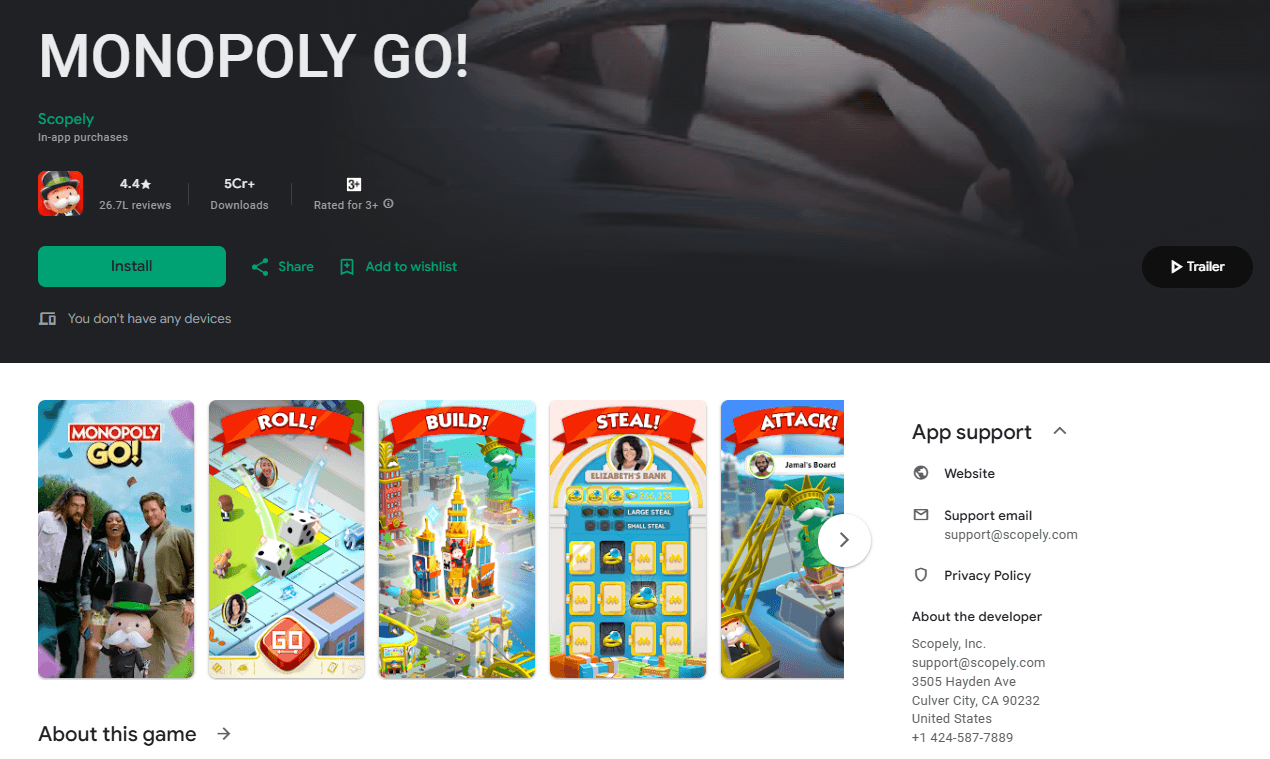
The app icon, featuring the iconic Mr. Monopoly, instantly draws attention and appeals to players. Vibrant visuals emphasize the engaging multiplayer mechanics, including rolling dice, earning Monopoly money, and interacting with friends. Screenshots showcase themed boards and innovative gameplay, blending classic Monopoly elements with modern twists. This approach appeals to both casual and competitive gamers, driving significant downloads.
2. Royal Match
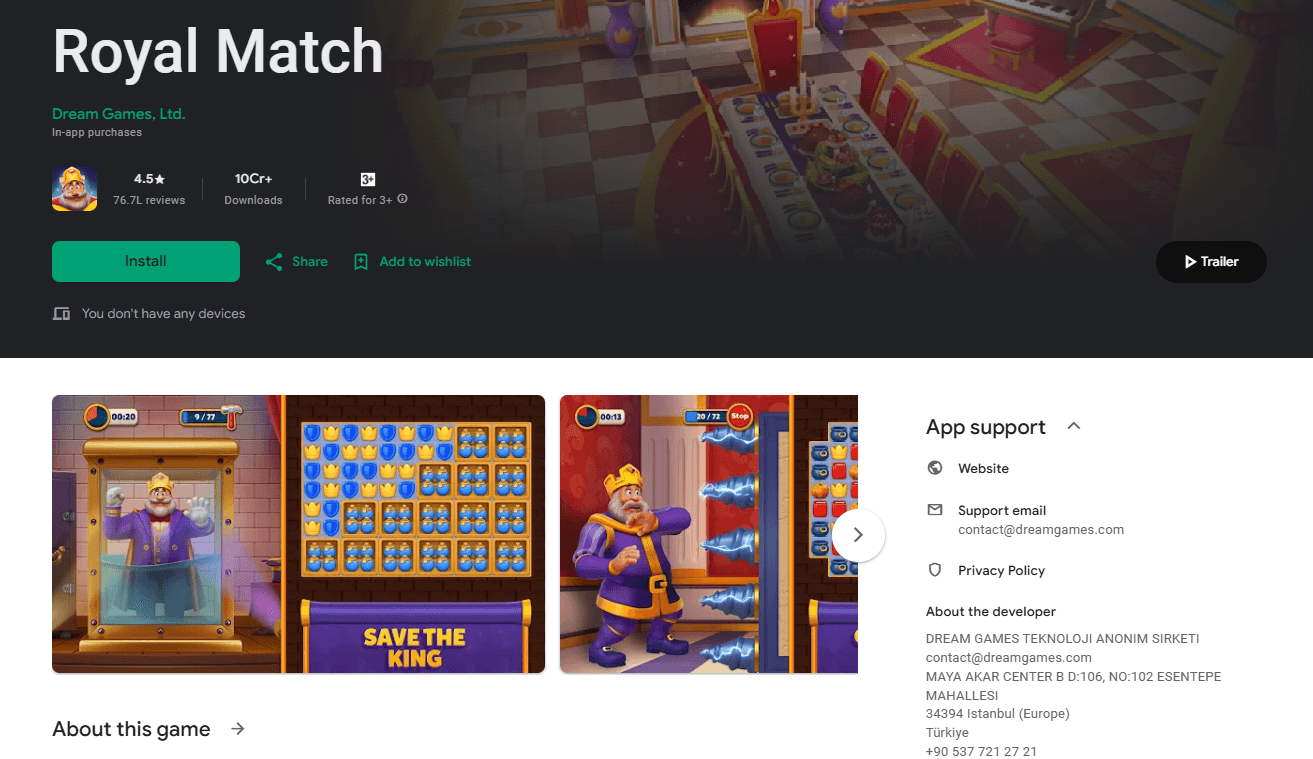
The vibrant crown on the app icon grabs the attention of match-3 puzzle fans, while screenshots emphasize palace decoration, blending puzzle-solving fun with creative design. With bright colors and dynamic visuals, Royal Match showcases its engaging gameplay and social features, appealing to a wide audience. This approach attracts new players and keeps existing fans engaged, driving user acquisition.
3. Brawl Stars
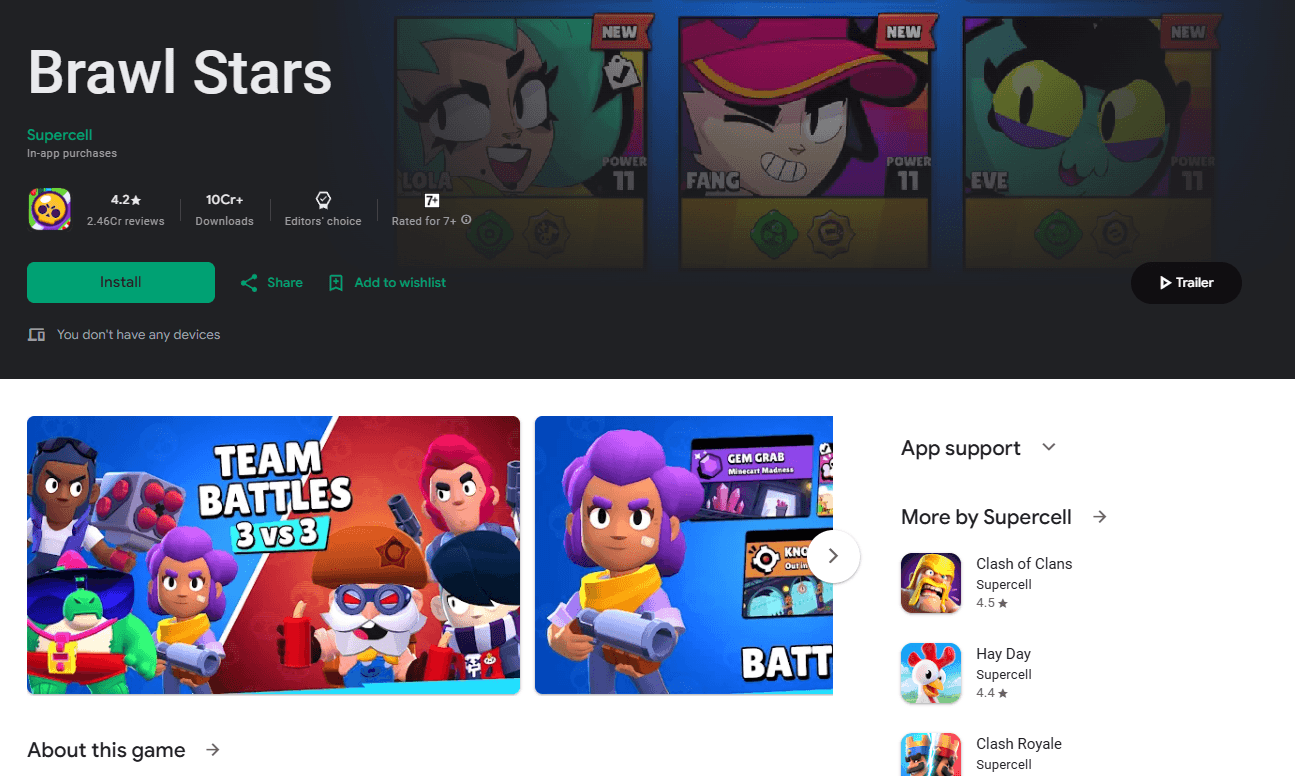
The app icon is vibrant and dynamic, showcasing brawlers in action, while the screenshots highlight fast-paced battles, unique game modes, and strategic gameplay. This approach conveys excitement, emphasizes team-based community engagement, and appeals to a broad audience, driving user acquisition by attracting players who crave competitive experiences.
Impact of App Icons and Screenshots
Visual marketing plays a crucial role in user acquisition for mobile games, as demonstrated by successful titles. Here are three key strategies for effective app icons and screenshots:
Recognition: Using familiar symbols or characters enhances instant recognition. For instance, Among Us effectively utilizes its iconic crewmate design to attract players, boosting download likelihood.
Visual Appeal: High-quality, dynamic visuals in screenshots can significantly entice potential users. Genshin Impact showcases stunning graphics that highlight its immersive world, leading to higher conversion rates from views to downloads.
Emotional Connection: Icons and visuals that evoke emotions can enhance player engagement. Brawl Stars taps into the thrill of competitive play, appealing to users who enjoy fast-paced action and community interaction.
Focusing on captivating app icons and engaging screenshots is essential for driving user acquisition in the competitive mobile gaming market.
Writing a Captivating App Description
An effective app description transforms curiosity into downloads by showcasing your game’s unique appeal. It’s more than a summary—it’s your chance to highlight what makes your game stand out.
Use storytelling to captivate players and spark their desire to dive into the experience. Clearly communicate the value your game delivers, whether it’s thrilling gameplay, immersive narratives, or social connections. Tailor your description to resonate with your audience’s interests, clarifying why your game is the one they’ve been waiting for.
While ASO boosts visibility, building a dedicated community ensures lasting engagement and loyalty.
4. Building a Loyal Community
Creating a loyal community for your mobile game goes beyond paid ads. It’s about fostering organic engagement and meaningful connections with your audience. Here's how you can achieve that:
Engage on Social Media
Use platforms like TikTok, Instagram, and Facebook to share updates, interact with users, and showcase user-generated content.
Use Interactive Content
Boost engagement with polls, quizzes, contests, and user-generated content like fan art or memes. Highlighting player contributions strengthens bonds.
Build Community Long-Term
Interactive content drives immediate engagement, but over time, it fosters a sense of community. Regularly sharing user content and staying engaged helps build long-term loyalty.
Nurture Communities on Reddit & Discord
Use Reddit and Discord to engage more deeply with your players. These platforms allow real-time interaction and provide a space for fans to connect with you and each other.
Leverage social media engagement, interactive content, and community-driven platforms to build a loyal user base that plays and promotes your game. Strengthen this connection through content marketing and collaborations to amplify your reach and create meaningful audience engagement.
5. Harnessing the Power of Content Marketing
Content marketing is key to attracting, educating, and retaining users. By delivering genuinely valuable content, you can foster stronger audience connections and drive meaningful growth for your app.
Utilizing UGC
User-generated content (UGC) is valuable for mobile gaming app marketing. It primarily includes user-generated videos, often in a picture-in-picture format, where players share their thoughts while showcasing gameplay. These authentic experiences engage the community and act as an effective acquisition tool by attracting new players through relatable content.
A notable example is the mobile game "Eggy Party" by NetEase, which includes a feature allowing players to upload their original content, such as custom maps and interactive props. This functionality is widely regarded as one of the core aspects of the game, fostering a vibrant community of creators and players.
Amplifying Through Targeted Ads
To maximize the impact of UGC and influencer-generated content, consider amplifying it through targeted advertising. Paid ads that feature authentic user experiences resonate more with potential users, making them more likely to engage with your app.
6. Building Partnerships and Collaborations
Collaborating with other brands, apps, and influencers is essential to expanding your game’s reach and visibility. Strategic partnerships, influencer collaborations, and co-marketing campaigns can significantly elevate your app’s competitive mobile app market presence.
Here’s how these approaches can work to your advantage:
Forming Strategic Partnerships with Complementary Apps
Forge strategic partnerships with apps that align with your game’s genre or audience to boost visibility. For instance, a puzzle game teaming up with a meditation app could offer a unique experience combining gameplay with relaxation. Such collaborations introduce your game to a new audience and deepen player engagement. Studies show cross-promotions can boost app downloads by up to 20%, enabling both partners to expand their user bases.
Collaborating with Content Creators and Influencers
Partnering with influential figures can greatly enhance your game's appeal. A prime example is actor Antony Starr's collaboration with Last War Survival. His character-driven ads introduced an engaging narrative that captivated fans of The Boys and added a compelling storytelling layer to the game.
To see how effective this approach can be, check out this video of Antony Starr's mobile game ads for a detailed breakdown of the campaign's impact.
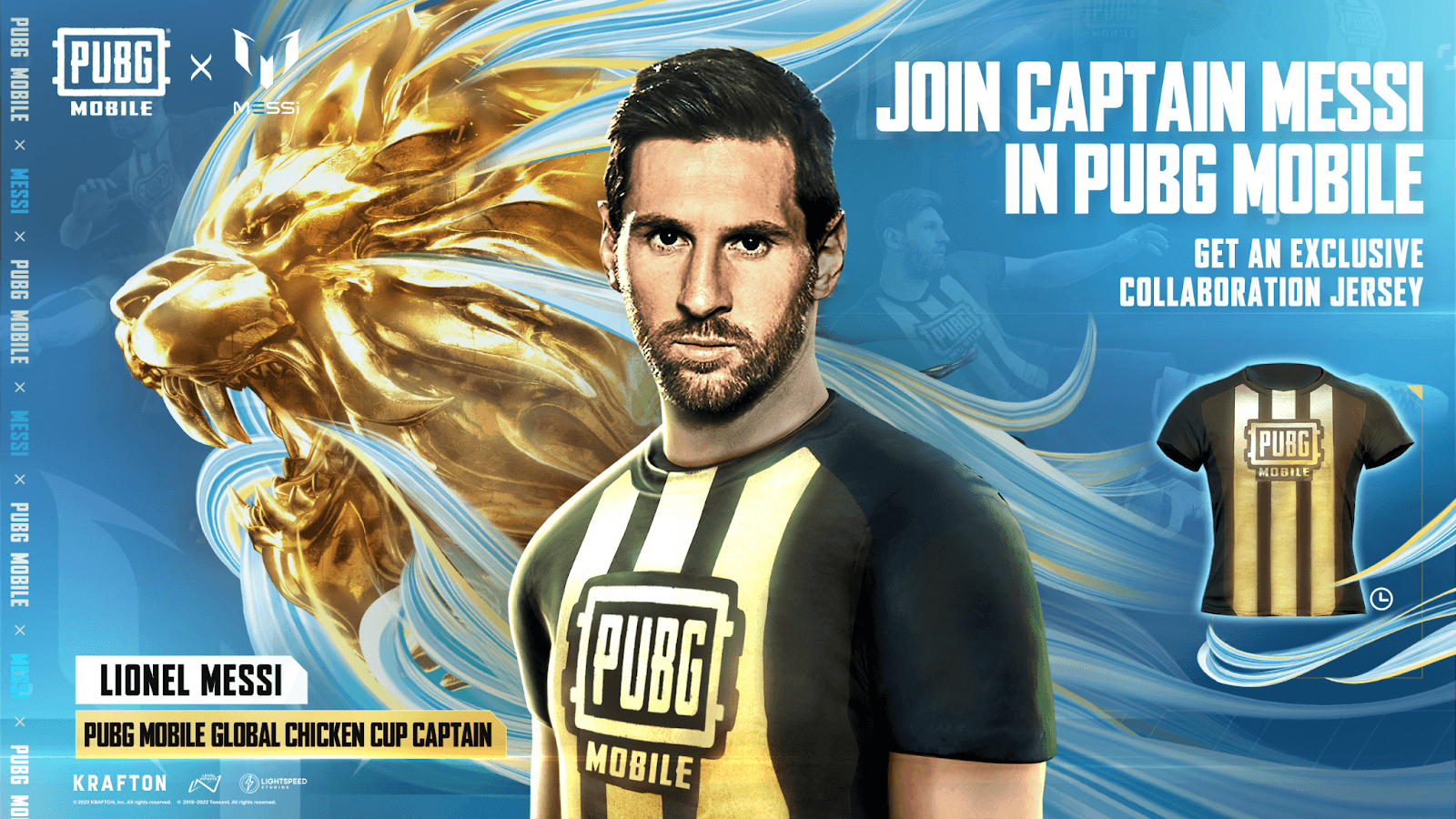
Similarly, football icon Lionel Messi's collaborations with games like Fortnite and PUBG Mobile demonstrate how celebrity partnerships can attract diverse fan bases and drive user engagement. In Fortnite, Messi's skin launch as part of the Icon Series not only created buzz but also incentivized football fans to try or return to the game, effectively combining two massive audiences.
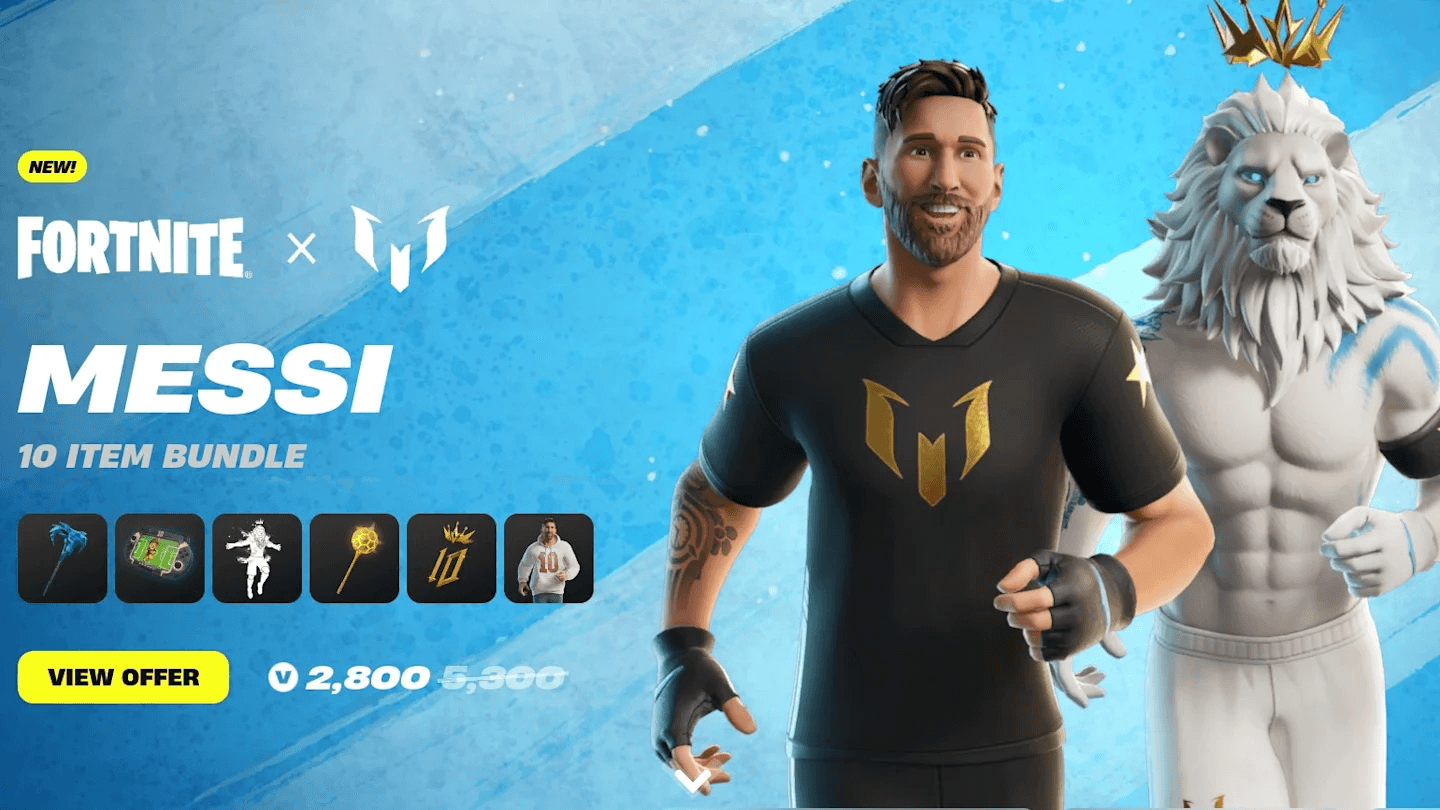
PUBG Mobile's integration of Messi's character proved equally strategic, offering both new and lapsed users a compelling reason to join or revisit the game while attracting millions of football enthusiasts who might not typically engage with mobile gaming.
Exploring Co-Marketing Campaigns with Aligned Brands
Collaborating with brands that share your target audience can be a game-changing strategy for acquiring new players. For example, a fantasy game might partner with a beverage brand to offer exclusive in-game rewards for purchasing specific products. This approach drives purchases, boosts engagement for both the game and the partner brand, and fosters a win-win relationship.
Co-marketing campaigns unlock growth by leveraging each other's customer bases, demonstrating the power of shared audiences. Integrating such partnerships, influencer collaborations, and strategic alliances into your mobile app marketing plan can generate buzz, enhance engagement, and expand your reach.
Conclusion
As the mobile gaming market becomes increasingly competitive, it’s essential to master the best mobile app marketing strategies. You can maximize your acquisition efforts by utilizing paid advertising, understanding your audience, optimizing your app store presence, leveraging social media, and tracking your success.
Looking ahead, trends like AI-powered analytics, predictive marketing, and more personalized user experiences will shape the future of mobile app marketing. That’s where Segwise comes in. Its powerful AI-driven tools provide actionable insights that help you optimize your acquisition campaigns and enhance your marketing efforts.
Want to scale your mobile game acquisition and get the most out of your marketing efforts? Segwise has the tools to help you make smarter, data-driven decisions. Give it a try with a 14-day free trial and see how it can take your mobile game to the next level!